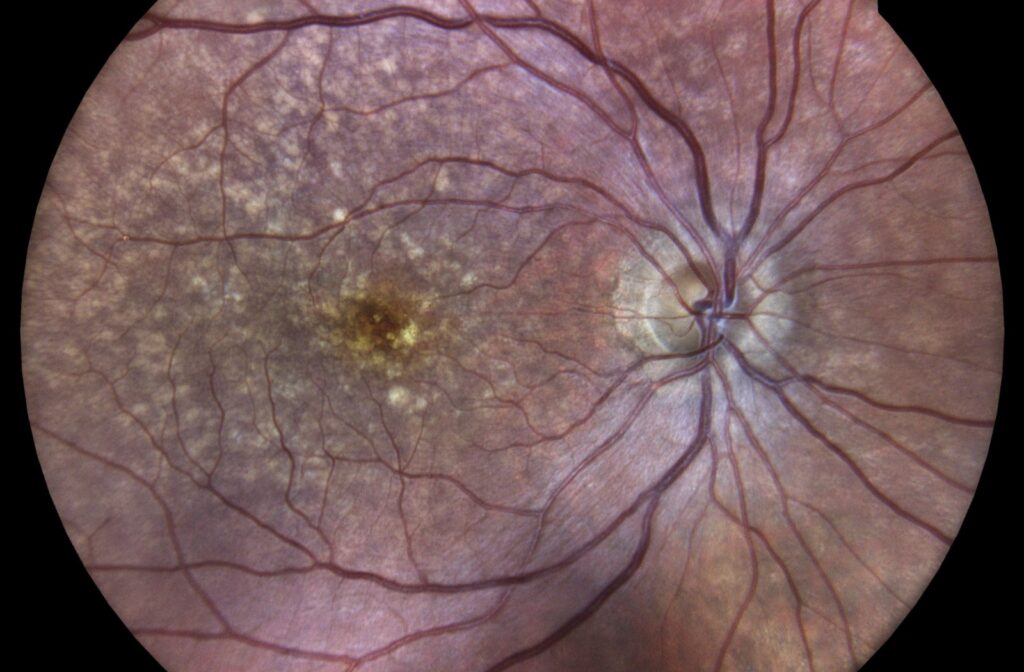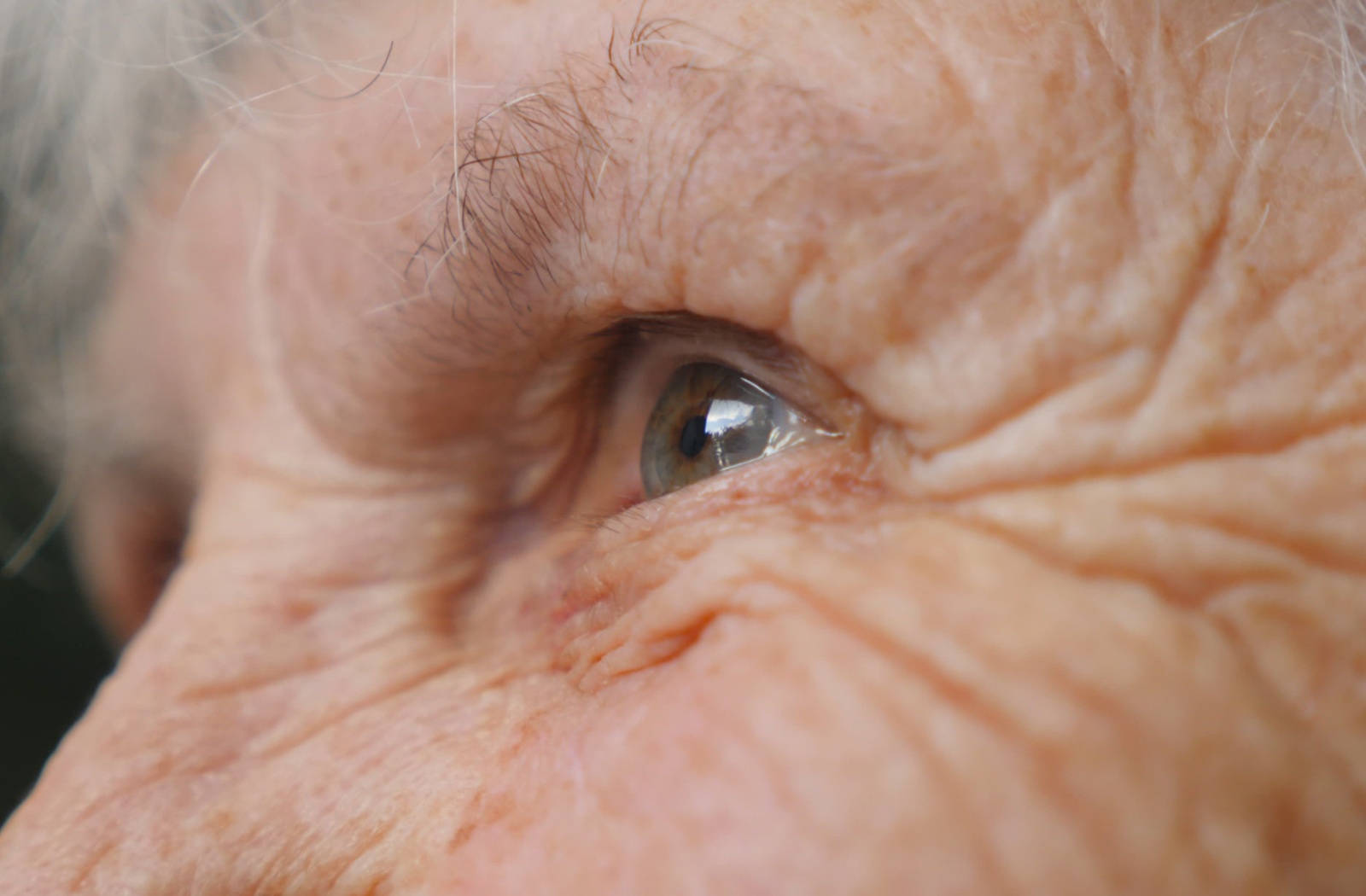Dry age-related macular degeneration affects millions of people worldwide, but until recently, no proven treatment existed to help restore lost vision. This reality has left countless patients and eye care professionals feeling helpless against this progressive condition.
MacuMira changes that narrative entirely. As Canada’s first clinically proven and authorized treatment for dry AMD patients, MacuMira uses microcurrent stimulation technology to support retinal health and has demonstrated remarkable results in clinical trials.
For eye care providers seeking evidence-based solutions to offer their dry AMD patients, understanding MacuMira’s technology and clinical outcomes provides valuable insight into this therapeutic option.
What Is Dry Age-Related Macular Degeneration?
Dry AMD is the most common form of age-related macular degeneration, a progressive eye condition affecting the macula, the central part of the retina, which is responsible for sharp, detailed vision.
This condition develops when the macula thins over time, and it’s often accompanied by the formation of drusen—yellow deposits that develop under the retina. As photoreceptor cells in the macula deteriorate, patients experience gradual central vision loss, while peripheral vision typically remains intact.
Unlike wet AMD, which can progress rapidly, dry AMD typically develops slowly over years or decades. However, this gradual progression can still significantly impact patients quality of life and independence.
Risk Factors and Development of Dry AMD
Several factors can contribute to the development of dry AMD:
- Age remains the primary risk factor, with the condition most commonly affecting individuals over 50. The risk increases substantially after age 75.
- Genetic predisposition plays a significant role, with family history being a strong predictor of AMD development. Specific genetic variants, particularly in the complement pathway genes, substantially increase susceptibility.
- Environmental factors also contribute to AMD risk. Smoking represents one of the most significant modifiable risk factors, potentially doubling or tripling AMD risk. Long-term UV light exposure, poor nutrition, and cardiovascular disease also contribute to the development of the disease.
Understanding these risk factors helps eye care providers identify patients who may benefit from early screening and intervention strategies.
Traditional Treatment Approaches for Dry AMD
Historically, dry AMD management has focused primarily on prevention and slowing disease progression rather than on treating existing vision loss.
- Nutritional supplementation remains a cornerstone of traditional dry AMD management. In some patients, specific vitamin and mineral combinations can reduce the risk of progression to advanced AMD.
- Lifestyle modifications form another key component of traditional care. These include smoking cessation, maintaining a healthy diet rich in leafy greens and omega-3 fatty acids, regular exercise, and protection from UV light exposure.
- Regular monitoring through comprehensive eye examinations allows for early detection of disease progression and timely intervention when appropriate.
However, these approaches primarily aim to prevent further vision loss rather than restoring visual function that has already been compromised. This limitation has left a significant treatment gap for patients experiencing vision impairment from dry AMD.

Introducing MacuMira for Dry AMD
MacuMira represents a paradigm shift in dry AMD treatment by offering the first clinically proven method to improve visual function in affected patients. Our device received authorization as a safe and effective treatment for dry AMD.
The MacuMira system utilizes microcurrent stimulation technology to support retinal health. This approach builds on decades of research demonstrating that controlled electrical stimulation can promote cellular function and tissue repair.
The treatment process is remarkably patient-friendly. Patients simply visit their eye care provider on a prescribed schedule and wear the MacuMira device for approximately 30 minutes per session. The treatment requires no injections, medication, lasers, or surgical procedures.
Clinical validation sets MacuMira apart from other treatment approaches. In rigorous clinical trials, 100% of treated patients demonstrated improved visual function, with results typically appearing within 4 weeks of the first treatment.
How MacuMira Technology Works
MacuMira’s effectiveness stems from our microcurrent stimulation technology. The device delivers precisely controlled electrical currents to ocular tissues, promoting cellular function and potentially stimulating retinal repair mechanisms.
- Microcurrent technology. The low-level electrical currents used by MacuMira are similar to the body’s natural bioelectrical currents, making the treatment both safe and well-tolerated.
- The stimulation process appears to support retinal pigment epithelium (RPE) function and may help maintain photoreceptor cell viability. While the exact mechanisms continue to be studied, clinical results demonstrate clear improvements in visual function.
- Treatment protocols typically involve a series of sessions over several months. The specific treatment schedule is determined by the eye care provider based on individual patient needs and response to therapy.
Clinical Evidence and Patient Outcomes
MacuMira’s clinical trial results provide compelling evidence of the treatment’s effectiveness:
- 100% of patients in the treatment group showed improved vision.
- 48% of patients improved by at least 10 letters on the ETDRS visual acuity chart, representing clinically significant vision improvement.
- Average improvement was 8.2 ETDRS letters, along with a 25% average increase in visual acuity. For context, a 5-letter improvement is considered clinically meaningful.
- Contrast sensitivity also improved, enhancing patients’ ability to distinguish objects from their background—crucial for daily activities like reading and navigating stairs.
- Zero adverse effects were reported during the trial, demonstrating the treatment’s excellent safety profile.
- Vision improvements were maintained throughout the trial period, while placebo group participants experienced the expected decline in visual acuity.
These results represent a breakthrough in dry AMD treatment, offering hope to patients who previously had no therapeutic options for vision restoration.
How Can MacuMira Help Your Practice?
For eye care providers considering MacuMira for their practice, the implementation process is designed to be straightforward and minimally disruptive.
- Training and certification programs ensure providers can safely and effectively deliver MacuMira treatments. The technology’s user-friendly design facilitates easy integration into existing clinic workflows.
- Patient selection focuses on individuals with documented dry AMD who may benefit from visual function improvement. The treatment can be particularly valuable for patients experiencing vision-related quality of life impacts.
- Treatment scheduling typically involves regular appointments over several months, creating opportunities for ongoing patient relationships and comprehensive eye care.
- Integration with existing care allows MacuMira to complement traditional AMD management approaches, providing a comprehensive treatment strategy.
The Future of Dry AMD Treatment
MacuMira represents just the beginning of a new era in dry AMD treatment. As our understanding of retinal stimulation technology continues to evolve, additional applications and refinements are likely to emerge.
- Ongoing research continues to explore optimal treatment protocols, patient selection criteria, and long-term outcomes. This evidence base will further refine MacuMira’s clinical applications.
- Technological advancement may lead to enhanced devices with improved precision and effectiveness. The foundation established by MacuMira opens doors for continued innovation in retinal therapeutics.
- Patient access will likely expand as more providers adopt this technology and insurance coverage evolves to include these breakthrough treatments.
For eye care providers committed to providing the most innovative care for their AMD patients, MacuMira offers an unprecedented opportunity to restore hope and improve quality of life through proven vision enhancement.
Try MacuMira Today!
MacuMira has transformed the dry AMD treatment landscape from management-focused to restoration-oriented care. By offering the first clinically proven method to improve visual function in dry AMD patients, this innovative technology provides eye care professionals with a powerful new tool to help their patients reclaim precious sight and independence.




